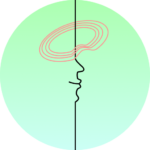Understanding and Managing Nausea and Migraine Symptoms
Nausea and migraines frequently occur together, complicating the lives of many individuals. Understanding the relationship between these conditions is essential for effective management and relief.

Exploring the Physiological and Neurological Connections Between Nausea and Migraines
Nausea and migraines are two symptoms that often appear together, creating a complex and challenging experience for those affected. The physiological and neurological connections between these conditions are intricate, involving multiple pathways in the brain and body. Migraines are believed to originate in the brain, where a wave of nerve cell activity spreads across the cortex, causing a cascade of changes in blood flow and neurotransmitter release. This neurological storm can trigger the sensation of nausea through the activation of the vagus nerve, which connects the brain to the digestive system.
The overlap between the pathways involved in migraines and nausea is further complicated by the role of serotonin, a key neurotransmitter. During a migraine, serotonin levels fluctuate, which can influence both the dilation and constriction of blood vessels and the regulation of the gastrointestinal tract. This dual impact can lead to the simultaneous experience of a throbbing headache and an upset stomach.
Understanding these connections is crucial for developing effective treatments. By targeting the shared pathways, it may be possible to alleviate both symptoms simultaneously. Research continues to explore these complex interactions, aiming to provide relief for those who suffer from this debilitating combination.
A Comprehensive Guide to Over-the-Counter and Prescription Treatments for Nausea and Migraine Relief
Finding relief from nausea and migraines often requires a combination of over-the-counter (OTC) and prescription medications. Each type of medication targets different aspects of the symptoms, providing a multi-faceted approach to treatment.
For many, OTC medications are a first line of defense. Nonsteroidal anti-inflammatory drugs (NSAIDs) can help reduce the inflammation and pain associated with migraines. In addition, antiemetic medications can be used to control nausea, helping to settle the stomach and prevent vomiting. These medications are widely available and can be effective for mild to moderate symptoms.
For more severe cases, prescription medications may be necessary. Triptans are a class of drugs specifically designed to treat migraines by targeting serotonin receptors in the brain. These medications can reduce the intensity of a migraine and alleviate associated symptoms, including nausea. In some cases, doctors may prescribe preventive medications, such as beta-blockers or anticonvulsants, to reduce the frequency and severity of migraines.
It’s important for individuals to work closely with their healthcare providers to determine the most appropriate treatment plan. Factors such as the frequency of migraines, the severity of symptoms, and any underlying health conditions must be considered when selecting medications.
The Role of Diet and Nutritional Supplements in Alleviating Nausea and Migraine Symptoms
Diet and nutrition play a significant role in managing nausea and migraine symptoms. Certain foods and supplements can help reduce the frequency and severity of these conditions, providing a natural complement to traditional medical treatments.
For many individuals, identifying and avoiding dietary triggers is a key strategy. Common triggers include caffeine, alcohol, and foods high in tyramine, such as aged cheeses and processed meats. Keeping a food diary can help pinpoint specific triggers and guide dietary adjustments.
Nutritional supplements can also offer support. Magnesium, for example, has been shown to reduce the frequency of migraines in some individuals. It is believed to stabilize blood vessels and reduce the likelihood of migraine onset. Riboflavin (Vitamin B2) is another supplement that has demonstrated potential benefits in reducing migraine frequency.
In addition to avoiding triggers and incorporating supplements, maintaining a balanced diet rich in fruits, vegetables, and whole grains can support overall health and reduce the risk of migraines. Hydration is also crucial, as dehydration can exacerbate both nausea and migraines.
Consulting with a healthcare provider or nutritionist can provide personalized guidance on dietary changes and supplement use, ensuring a comprehensive approach to managing these challenging symptoms.
